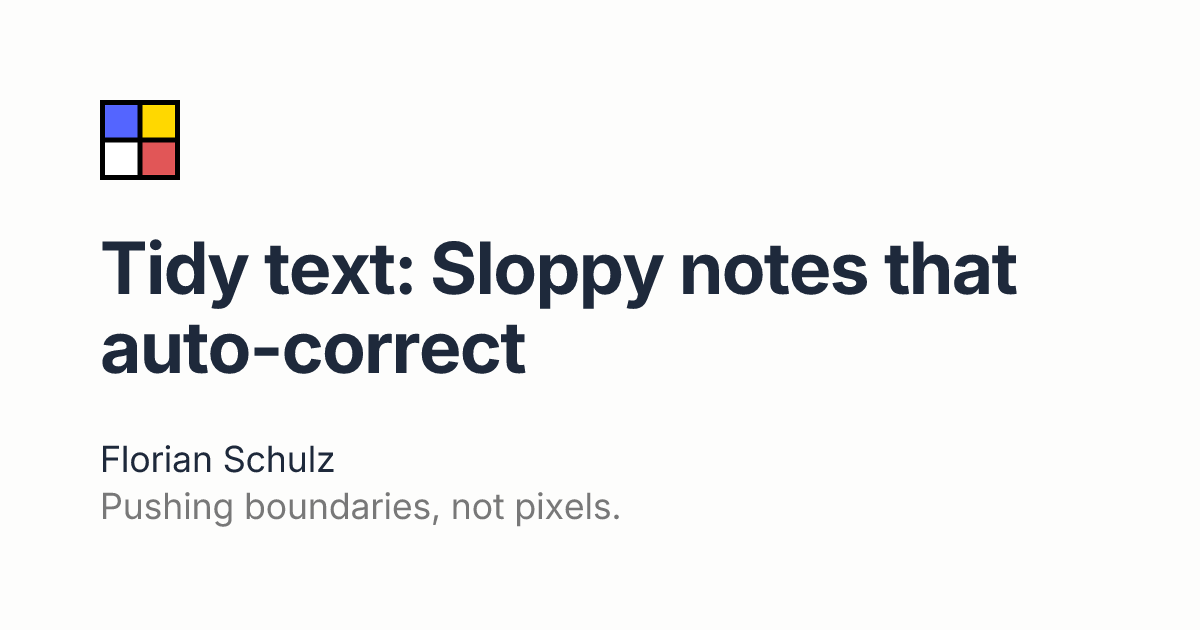
"Sometimes I have ideas that I want to write down as fast as possible before I forget them. On mobile, slow typing, constant shift toggling, and switching keyboards for punctuation get in the way. What if I could type sloppily and the text could correct itself line by line? What if I could define my own rules for it? After all, text is the interface."
"As a designer, I appreciate correct writing and typographic precision. I really care about the proper use of quotation marks, apostrophes, and dashes. But for notes, I sometimes just want to get my thoughts out without spending too much time on formatting. I'll type fast, without correcting anything. It's the digital version of bad handwriting that no one but the author can decipher."
"I thought: "Let's make a prototype with as little friction as possible. I'll reach for Google Gemini 2.5 Flash Lite. I want a fast and inexpensive model for this simple task and don't mess around with paying a subscription for an API." Of course: for a real app that I would use day-to-day, I wouldn't like to send all my notes over to Google."
Mobile note-taking is slowed by slow typing, shift toggling, and punctuation keyboard switches, which interrupt rapid idea capture. Allowing sloppy typing with line-by-line automatic corrections and user-defined rules enables fast capture while producing typographically correct, readable text. The designer values precise quotation marks, apostrophes, and dashes but prefers minimal formatting effort for quick notes. A prototype using Google Gemini 2.5 Flash Lite was chosen for speed and low cost, while concerns about sending notes to Google raised privacy considerations. In-browser WebLLM could reduce privacy risks but faces latency, device variability, and large model download issues. Built-in Nano models and a Proofreader API could address the use case.
Read at Florianschulz
Unable to calculate read time
Collection
[
|
...
]